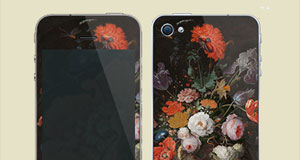…; ? collection Antoine Perrenot de Granvelle (1517-1586) and/or his nephew François Perrenot de Granvelle (?1559-1607), Besançon, Palais Granvelle, by 1607;{My thanks to Arie Pappot for this information; email communication 25 March 2025. See Auguste Castan, ‘Monographie du palais Granvelle à Besançon’, Mémoires de la Société d'émulation du Doubs 4 (1867), part 2 (1866), pp. 37-78 (‘Inventaire des meubles de la maison de Granvelle’), spec. p. 75 (Une teste d'un enffant criard, taillée en bois, d'Albert Durez, ayant une mouche le piquant au front, d'haulteur de neufz polces, no 111.) (A head of a screaming child, carved in wood, by Albert Durez [= Albrecht Dürer], with a fly biting him on the forehead, height of nine thumbs). The height of 9 thumbs (= 24.5 cm) generally corresponds to the diameter of the tondo (25.2 cm). The inventory was compiled directly following the death of François Perrenot, the last male descendant of the Granvelle family, in 1607. That the sculpture ended up in Besançon via the same François cannot be ruled out; he was the son of Thomas Perrenot de Chantonnay (1521-1571) and Helena van Brederode (c.1525-1572), who was Dutch.}…; collection of the Orla or Szaszor family,{The coat of arms on the lacquer seal on the reverse side can be identified as that of one of two Polish noble families. According to Karel van Mander, _Het Schilder-boeck_, Haarlem 1604, fol. 279r., a Polish nobleman possessed several works by Cornelis Ketel painted ‘with the foot’ (_met de voet geschilderde werken_): _Een Poolsche Graef, Andreas Lescinski, Graef van Leschno gheheeten, heeft van hem_ [= Ketel] _oock eenige tronien met den voet._ (A Polish Count, Andreas Lescinski, called Count of Leshno, also possess several tronies with the foot by him [=Ketel]). Given the close amicable ties between Cornelis Ketel and Hendrick de Keyser, one might therefore inquire whether the present _Crying Boy Stung by a Bee_ perhaps also ended up in a Polish collection via a family member or agent of this count. For Count Andreas Lescziński (1559-1606), who supported the Reformation and lived in Leszno, see H. Miedema (ed.), _Karel van Mander: The Lives of the Illustrious Netherlandish and German Painters, from the First Edition of the Schilder-boeck (1603-1604): Commentary on lives: fol. 262r01-291r47_, Doornspijk 1994, p. 152. For the close friendship between Ketel and De Keyser, see F. Scholten, ‘Ketel and De Keyser’, _The Rijksmuseum Bulletin_ 69 (2021), no. 4, pp. 354-63.} Poland, ? 18th century; …; sale collection Simon Wolf (‘Sim’) Josephus Jitta (1818-1897, Amsterdam), Paris (Drouot), 5-22 March 1883, no. 432 (as ‘Italian, 16th century’),{No. 432 _Buis - Tête d’enfant pleurant et grimaçant piqué par une guèpe, sculpture en haut-relief, grandeur presque nature, appliquée sur un disque en bois noir. Pièce d’un beau caractère, de travail italien du XVIe siècle_ (Boxwood - Head of a weeping and grimacing child stung by a wasp, sculpture in high relief, almost life-size, applied to a black wooden disc. Piece beautiful in character, Italian work of the 16th century).} (bought-in at Ffrcs 1,500),{Copy RMA.}from his sale, Amsterdam (Frederik Muller), 9 November 1897, no. 250 (as ‘Italian, 16th century, attributed to Michelangelo’),{No. 250 _Tête d’enfant criant, grimaçant et dont les cheveux sont hérissés par la douleur que lui cause une piqûre de guèpe. Sculpture en buis, en haut relief, grandeur presque nature, appliquée sur une disque en bois noir. Très-beau travail italien du XVIe siècle, attribué à Michel-Ange_ (Head of a child crying, grimacing and whose hair is standing on end from the pain of a wasp sting. Boxwood sculpture, in high relief, almost life-size, applied to a black wooden disc. Very beautiful Italian work of the 16th century, attributed to Michelangelo).} fl. 320, to his nephew Daniel Josephus Jitta (1854-1925);{Copy RMA. See also _Het Nieuws van de Dag_, Friday, 12 November 1897, 2nd page, p. 7.} his son Joseph Alfred Josephus Jitta (1890-1943), 1925;{In a photo from 1928 (copy in Object File, RMA), the present _Crying Boy Stung by a Bee_ can be seen in the living room of the home of Joseph Alfred Josephus Jitta, father of the last owner (Carla R. Josephus Jitta, Amsterdam). A bronze kneeling satyr by Desiderio da Firenze (sale London (Sotheby’s), 6 July 2007, no. 61) can also be seen on the right of same photo. See also written communication, Carla R. Josephus Jitta, 18 Augustus 2009, in Object File.} acquired by his brother Abraham Carel Josephus Jitta (1887-1958); his niece Carolina Rosi (‘Carla’) Josephus Jitta (1931-2024);{Carla R. Josephus Jitta was the daughter of Joseph Alfred Josephus Jitta. She writes (translated from the Dutch): ‘My grandfather Daniel must have purchased the child’s head from the estate of his uncle, Sim. (Uncle Sim had no children, just as his brother Joseph). My father is certain to have inherited it from his father and at some point sold to his brother Abraham Carel, from whom I inherited the head.’; written communication, Carla R. Josephus Jitta, 18 August 2009). And ‘In the 1950s, my uncle, who then had [the child’s head] in his possession, once had it assessed via the director of the Gemeentemuseum in The Hague; result: it was said to be South German. After I inherited it in 1959, Jobs Wertheim, the sculptor and a cousin of my father, showed photos of it [to someone] in the Rijksmuseum.’} by whom donated to the museum,with right of usufruct, 2007; transferred to the museum, 2012
Bibliografie en afkortingenlijst voor de herkomst (pdf)


